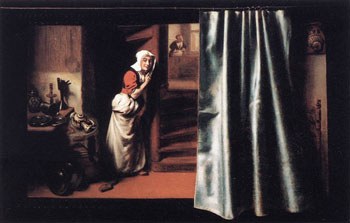SFB138, Subproject C03 — "The 'House' as Security and Gender (In-)Security"
Research project within the framework of the DFG Collaborative Research Centre/Transregio 138 "Dynamics of Security. Types of Securitization from a Historical Perspective"
As nucleus of the political (and divine) world order the house is of crucial importance to the organisation of the Early Modern society. Hence, since the 15th century, it is the essential guarantor of social stability in economic, educational, communal and aesthetic domains. However, regarding the ascribed properties of security the multidimensionality of the house as a building, social group and model of social order also signifies a high degree of ambivalence. This also has an effect on the gender order, for which the house has both a formative and a safeguarding function.
Research Topic B: “The woman as a factor of safety: On the visuality of her ‘domestication’ in the Early Modern period”

In addition to the spatial location of the woman in the house, the art historical research project also focuses on the constriction of the two bodies, or rather on the representational strategy of linking the female and the architectural body. Based on the assumption that the woman is marked as a subject of security with the help of artworks to simultaneously demand, shape and socialise this domestication, the narrative of the Annunciation moves into the focus of consideration. At the beginning of the 15th century, this motif experiences strong interest in Italian but also northern Alpine painting. Both the rich foundation of source material and the foundational research provide ideal conditions to examine the applicability of questions of security research in accordance with art history.
Research Team
